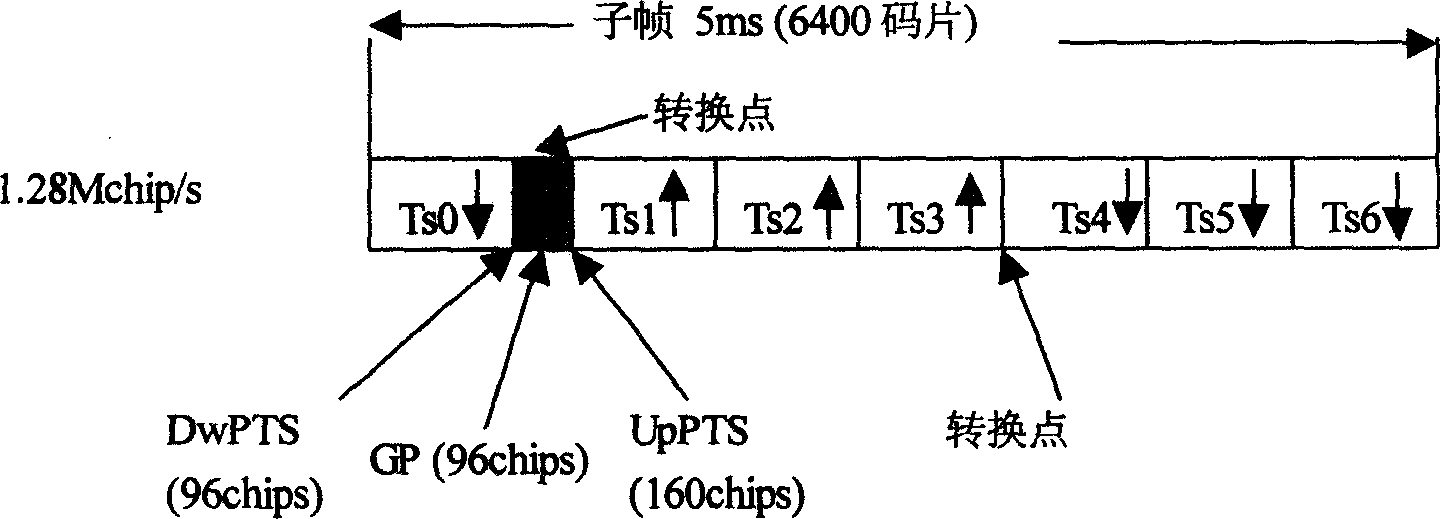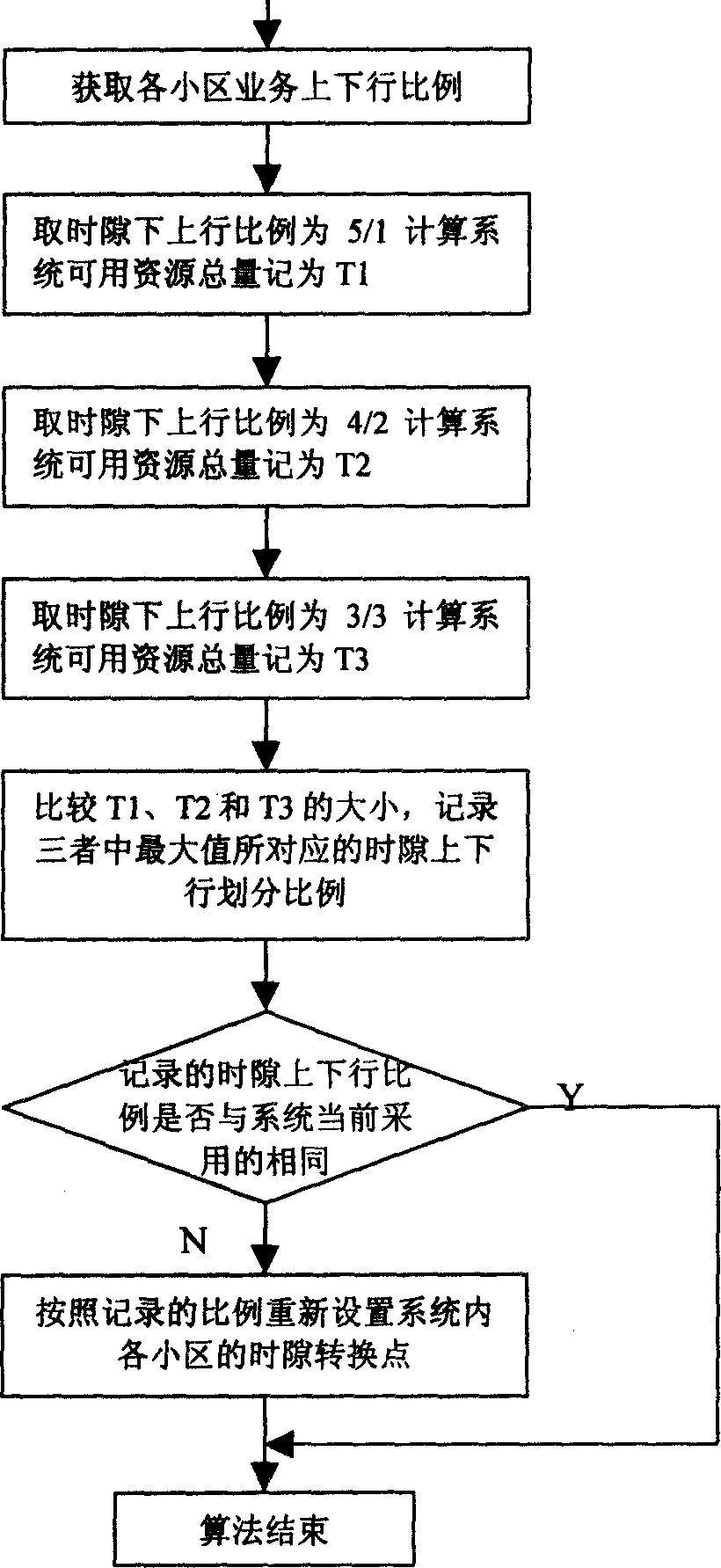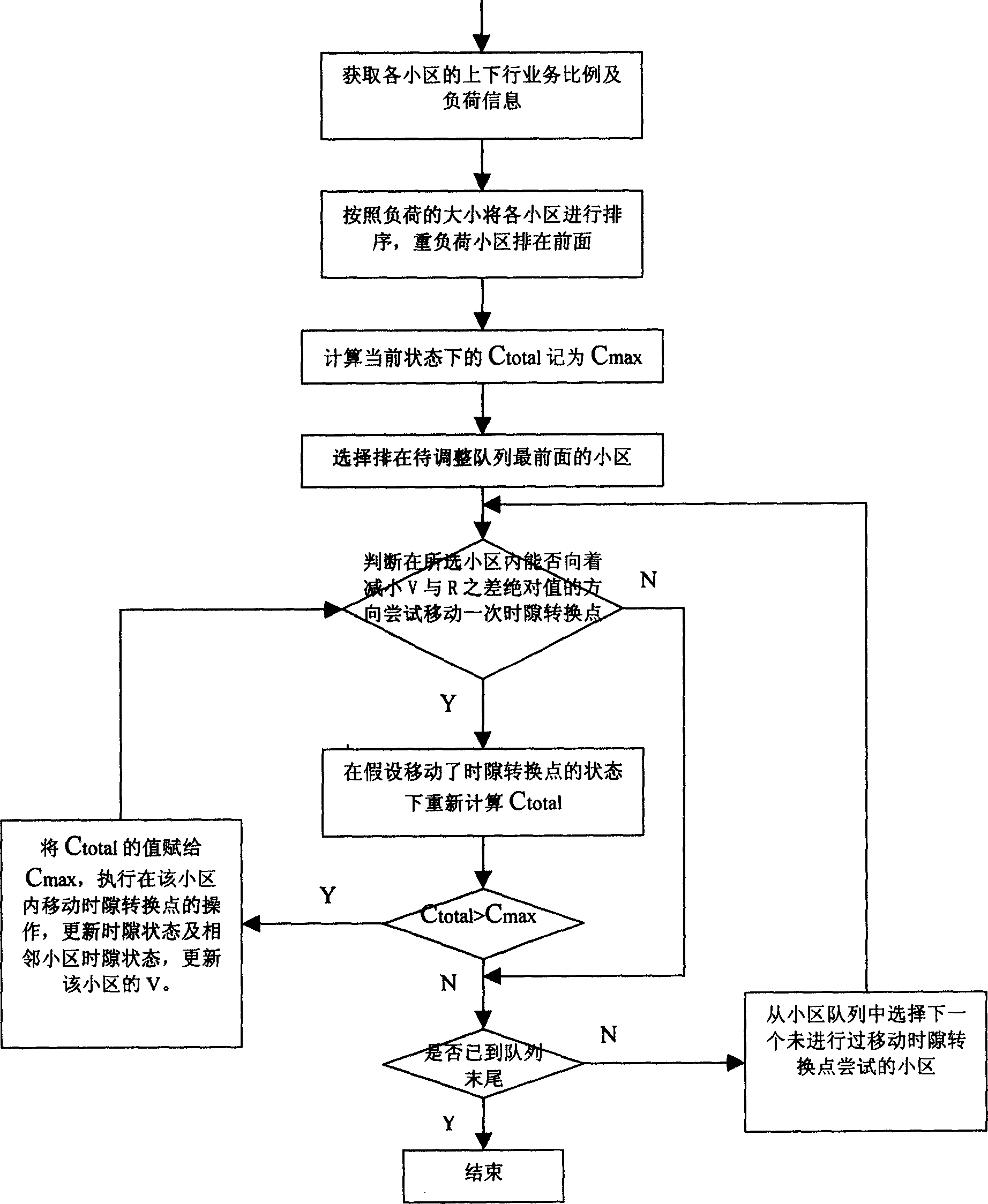Method and apparatus for upstream and downstream resource allocation in time division duplexing mobile communication system
A mobile communication system and time-division duplex technology, which is applied in the direction of selection device, wireless communication, network traffic/resource management, etc., can solve the problem that the time-division duplex system cannot be fully and effectively utilized, the system capacity is large, and the optimal allocation of system resources cannot be guaranteed and other issues to achieve the effect of improving spectrum utilization, reducing system capacity loss, and reducing the amount of computation
- Summary
- Abstract
- Description
- Claims
- Application Information
AI Technical Summary
Problems solved by technology
Method used
Image
Examples
Embodiment 1
[0050] By calculating the uplink and downlink capacity and business volume of the cell and their ratio in the system, the total amount of available resources of each cell can be obtained. First, for the convenience of understanding and presentation, a parameter C is constructed using the downlink capacity, uplink capacity and the ratio of downlink traffic to uplink traffic in the cell to represent the total amount of available resources in the cell. The total amount of available resources C in the cell excludes unavailable resources due to one-way restriction, and reflects the real load capacity of each cell under the current business ratio. In Embodiment 1 of the present invention, the parameter is constructed by the following method:
[0051] 1) When the ratio V of the downlink to uplink capacity in the cell is smaller than the ratio R of the downlink to uplink traffic volume, that is, V<R, then the system capacity is limited by the downlink capacity; formula 1)
[0052] ...
Embodiment 2
[0073] The method in Embodiment 2 divides the uplink and downlink time slots according to the service ratio of each cell under the condition that cross time slots are allowed, so that the resource uplink and downlink ratio of each cell is closer to the service uplink and downlink ratio. Considering the impact of strong interference in the cross-slot, it is simplified and equivalent to the loss of capacity in the cross-slot, because the increase of interference in the CDMA-based system means the decline of the receiving capacity, that is, the reduction of capacity. Therefore, it is possible to quantify the impact of strong interference in cross-slots on system capacity. If the time slot division of a cell is determined only based on the uplink and downlink ratio of services in the cell, cross time slots may appear in the cell and adjacent cells, and the capacity loss introduced by the cross time slots may exceed the uplink and downlink time slots. The capacity increase obtained...
PUM
 Login to View More
Login to View More Abstract
Description
Claims
Application Information
 Login to View More
Login to View More - R&D
- Intellectual Property
- Life Sciences
- Materials
- Tech Scout
- Unparalleled Data Quality
- Higher Quality Content
- 60% Fewer Hallucinations
Browse by: Latest US Patents, China's latest patents, Technical Efficacy Thesaurus, Application Domain, Technology Topic, Popular Technical Reports.
© 2025 PatSnap. All rights reserved.Legal|Privacy policy|Modern Slavery Act Transparency Statement|Sitemap|About US| Contact US: help@patsnap.com



